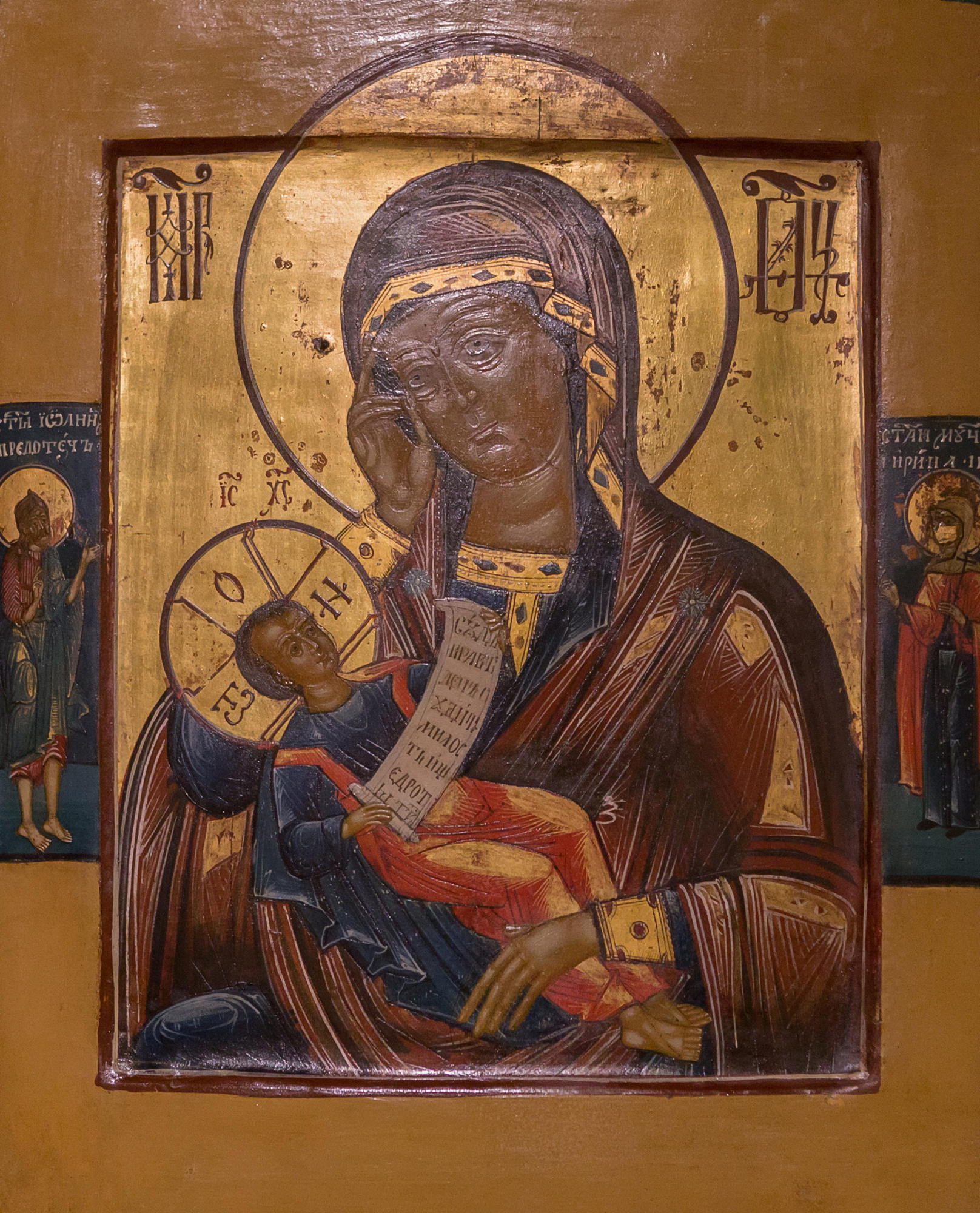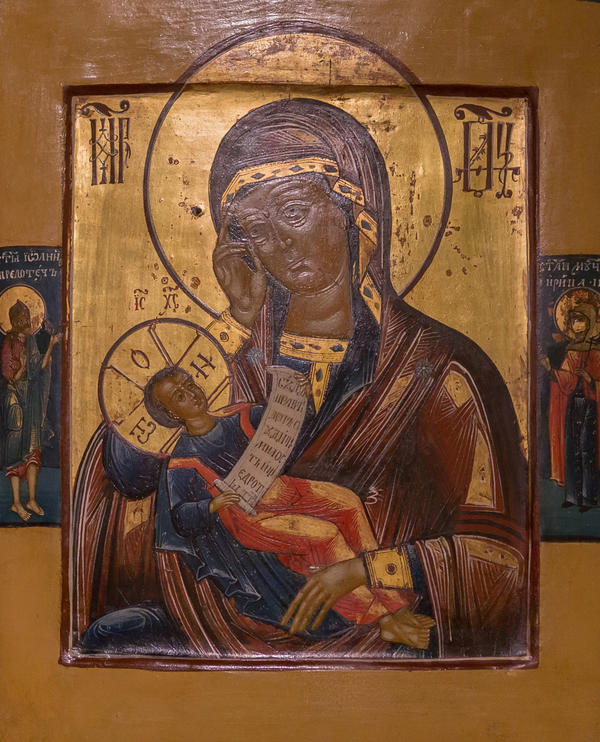The image of Our Lady Assuage My Sorrows is attributed to the iconographic type Hodigitria, which is translated from Greek as indicating the way. The Virgin is usually depicted with Infant Jesus on her knees. With her right hand she holds the Infant and her left hand she keeps near the inclined head. Such pose symbolizes that the Virgin listens to all prayers that are referred to her. Christ holds a scroll where the words from the Old Testament are inscribed.
Icon of Our Lady Assuage My Sorrows
Creation period
early XIX century
Dimensions
34,2x27,8 cm
34,2х27,8 cm
34,2х27,8 cm
Technique
wood, levkas, tempera
Collection
4
Open in app#1
Unknown artist
Icon of Our Lady Assuage My Sorrows, with Saint John the Baptist
#2
#5
Some researchers deem that the icon was copied from unknown Western engraving brought together with other replicas of Blessed Virgin Mary icons on the cusp of XVII and XVIII centuries. Other experts believe that for the first time the version of such icon appeared in the city of Shklov of Mogilev region.
In 1640 the duplication of this saint image – its replica – was brought to Moscow Church of Nicolas in Pupyshi. The local parish told a lot of stories about miraculous properties of this icon. The church clergy recorded them. However, documentary evidence about the miracles has hardly survived – in 1771 a fire broke in the church and the majority of evidence burn during the fire. However, some of them are still preserved till our days.
In 1640 the duplication of this saint image – its replica – was brought to Moscow Church of Nicolas in Pupyshi. The local parish told a lot of stories about miraculous properties of this icon. The church clergy recorded them. However, documentary evidence about the miracles has hardly survived – in 1771 a fire broke in the church and the majority of evidence burn during the fire. However, some of them are still preserved till our days.
#4
Thus, according to the legend, a rich woman who was severely sick and bound to bed lived near Moscow. She could afford any physicians, however, neither of them was able to cure her. One day the Virgin Mary appeared in her dreams. She committed her to set out for Moscow to the Church of Saint Nicholas. There she had to find the image with inscription: Assuage My Sorrows and pray before it. It brought healing to the sick woman.
When relatives brought the woman to this church, there was no such icon. Then the church clergy started looking for it among old and shabby images in the bell tower. There the icon that appeared in the dream, was found. When the sick woman saw the Virgin, she crossed herself although before she could not even shake her hand. Then she came up to kiss it. Raised herself without help of her relatives and left the church by herself, cured.
#6
During the Soviet time this icon was relocated to the Church of Nicholas in Kuznetsy after the church in Pupyshi was destroyed. The image that according to the legend cured the woman from severe disease is still kept there.
The main feature of the icon from the collection of the museum is mirror positioning of the Virgin and the Infant. Usually they are directed to the right. Such version is encountered in old believer’s interpretations. Researchers deem that in such a way the old believers emphasized their distinction from the official church.
The main feature of the icon from the collection of the museum is mirror positioning of the Virgin and the Infant. Usually they are directed to the right. Such version is encountered in old believer’s interpretations. Researchers deem that in such a way the old believers emphasized their distinction from the official church.
#8
The iconographer painted the image on the golden background. The craftsman used bright colors, primarily, dark-blue and red colors. The faces and parts of the bodies not covered with clothing were made in the traditional (for iconography) manner with very light ochre with brightening in certain places. The general silhouettes of the figures and drawing of the faces were made by the author in the traditions of classicism –the craftsman performed the faces in a most minimalistic manner but so that it would be possible to discern the emotions of the characters. He depicted saints on the fields – probably, patrons of family that ordered this icon.
#9
New Jerusalem Museum
read morehide
00:00
00:00
1x
Icon of Our Lady Assuage My Sorrows
Creation period
early XIX century
Dimensions
34,2x27,8 cm
34,2х27,8 cm
34,2х27,8 cm
Technique
wood, levkas, tempera
Collection
4
Open in app
Share



